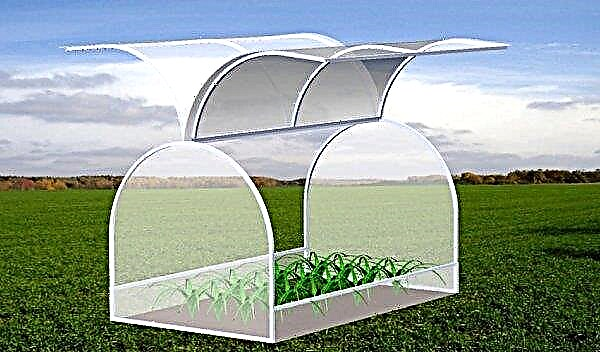Potatoes are one of the most consumed products; they are planted on almost every plot in the country or in the village. When harvesting, many vegetable growers use special equipment to facilitate labor. Today we will talk about the motoblock: its advantages, the rules for choosing and working with equipment.
Advantages and disadvantages of digging a walk-behind tractor
Manual maintenance of the site takes a lot of time and physical effort, so summer residents and farmers resort to using machines.
- The advantages of cars are obvious:
- simple design - you can understand the settings of the machine without technical skills;
- time saving - harvesting using a walk-behind tractor will take several times less time than when digging manually;
- saving of physical forces - mechanized labor requires less physical costs from the gardener;
- high-quality collection - skillful handling and proper design adjustment will avoid damage to tubers, which is not always possible when working with a shovel;
- additional functions - the acquisition of various nozzles, in addition to the digger, will allow not only to harvest, but also to carry out other land works (plowing, harrowing, sowing).
The lack of cars consider fuel costs. But, given the above, these costs fully pay for themselves. And to get used to working with the machine, it is enough to process several rows of landing.Did you know? In 1995, potato bushes were successfully grown in outer space. The sprouts took astronauts of the shuttle Columbia with them into orbit.
Varieties of Potato Digger
A nozzle for digging tubers can be purchased with a walk-behind tractor or made independently. An advantage in the first case: a large selection of factory models, workmanship. In the second case, having the skills in working with metal and the necessary tools, you can save on costs.
Factory
Factory models are of two types:
Important! The vibrating device is not suitable for too light models of walk-behind tractors.
Homemade
Having a welding machine and metal working skills can significantly save money on the purchase of a digger. At the same time, create a device that fully meets the needs of the farmer. The simplest model is a sheet of metal cut in the shape of a bayonet shovel with welded fan-type rods.
How to dig potatoes with a walk-behind tractor
Before you start harvesting, you need to properly adjust the device, prepare the site.
The sequence of actions when digging with a walk-behind tractor:Important! The main mistake is the rigid coupling of the plow with a motor block for two pivots. This will lead to strong resistance, a deviation towards not only the plow, but also the walk-behind tractor. To keep the machine with the plow straight, the farmer will require great physical effort.
- The first stage is the preparation of the site. Before harvesting potatoes, you need to clean the area from plant debris: tops, twigs, or fallen leaves. In the work, you can use the same walk-behind tractor by attaching special nozzles to it: hiller and rippers.
- Connection of a plow with a motor-block. In operation, the hitch is fixed with one kingpin to leave a play of about 5 degrees. Such a mount will weaken the pressure of resistance when the bucket is immersed in the soil.
- Bucket depth setting. Between the digger rack and the lock are fixing bolts, loosening or tightening which, adjust the desired immersion depth in the soil. If this setting is ignored, the tubers will be damaged when digging.
- Adjusting the angle of attack. The angle of entry of the bucket into the soil relative to its surface is adjusted using screws. First, they are twisted, lowering the lower plane of the plow to the ground. Then, tightening the bolts, the back of the structure is raised above the soil surface by 2.5 cm.
- After all the settings and adjustments proceed directly to the excavation. It is recommended to collect tubers, passing the machine through a row: first, third, fifth. This sequence allows you to avoid damage to the tuber excavated by the wheels of the machine.
Video: MTZ walk-behind tractor with a screening potato digger
Selection recommendations
The choice of walk-behind tractor and digger for it depend on the needs of the farmer. At the same time, such factors are taken into account:
- plot size - the larger the area, the greater should be the engine power of the machine;
- soil structure - for heavy soils with a dense structure, light structures are not suitable;
- Type of fuel - gasoline or diesel.
 To determine which type of engine and the better, you need to familiarize yourself with their comparative characteristics:
To determine which type of engine and the better, you need to familiarize yourself with their comparative characteristics:- power - diesel cars have more power, high traction, effective on heavy soils. Gasoline more maneuverable, a great option for a small area with light soil. A diesel engine is able to work longer because it has two types of cooling (water and air), a gasoline engine only air cooling, it needs breaks;
- profitability - diesel costs are significantly less than gasoline, given that the fuel for the latter should have an octane rating of at least “92”;
- ease of use - gasoline engines produce less noise, they can work at low temperatures, vibration in operation is almost not felt. Diesel cars are noisy, they additionally require oil, heavy weight creates a strong vibration during operation.
 Given the power of the walk-behind tractor, the digger design is selected for it:
Given the power of the walk-behind tractor, the digger design is selected for it:- for low-power or with an average indicator of the strength of the units, simple designs are selected - fan or lancet. The model is inexpensive, all its parts are stationary, without moving parts;
- for heavy machines a screen digger is more suitable. Its advantage is that the tubers are cleared of adhering earth, even if the soil is wet.
Did you know? In 2010, a record was recorded at the National Horticultural Show in England: farmer Peter Gleisbrook presented his own 3.8 kg potato tuber.
The acquisition of a walk-behind tractor will greatly facilitate the summer resident or farmer working on the ground. A competent approach to choosing a device will save and expand the list of ongoing work.












